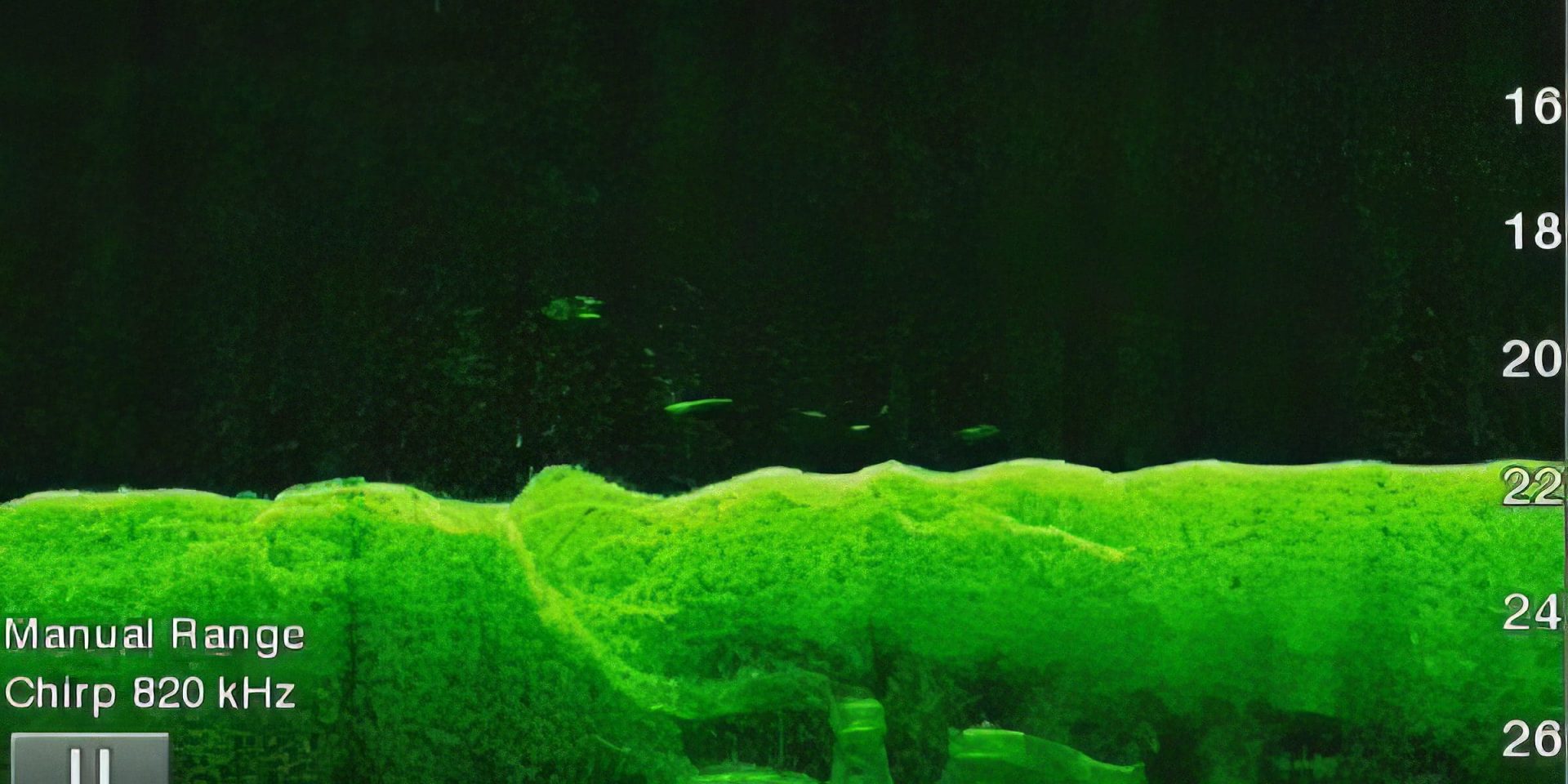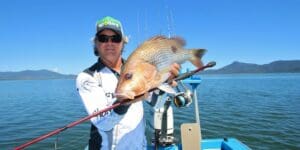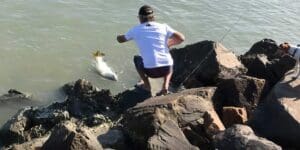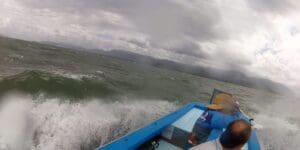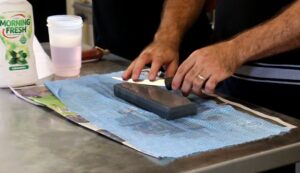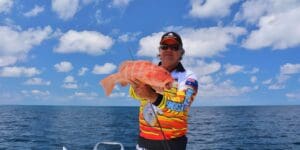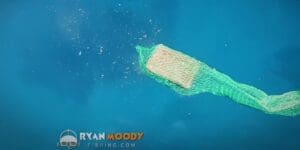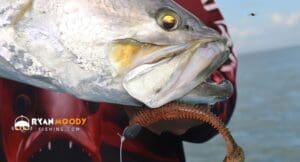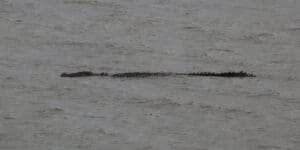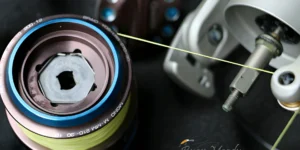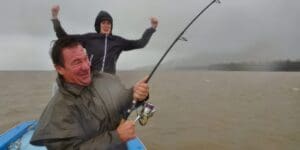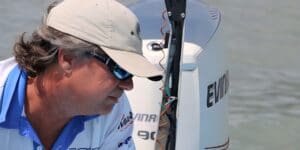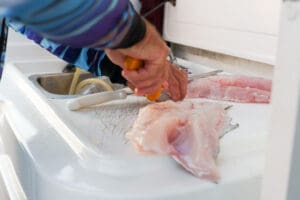Finding red emperor and scarlet sea perch (nannygai) in a big ocean can be a challenge.
Red emperor, scarlet sea perch (along with coral trout) are collectively known as reds and are all prized sports fish and top-grade food fish.
Red emperor and nannygai are common residents of underground springs that we call Wonky Holes.
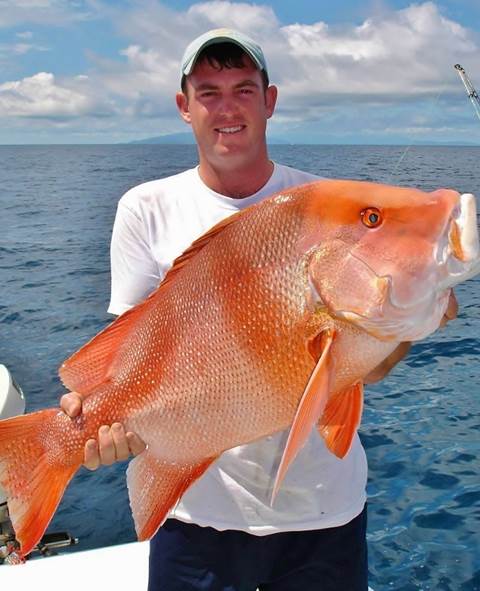
Typically red emperor is found in deeper water than nannygai by most anglers. However, I regularly find good schools of them in 20-25m on untouched fishing locations we find ourselves. (mostly Wonky Holes).
It’s only in recent years that Wonky Holes have been known about. Although I have been fishing them since I was 20-ish.
Red emperor and nannygai don’t actually school together. But they can be found in the same locations.
Red emperor tends be lower in the water column preferring to feed closer to the bottom, foraging for squid crab and octopus.
Nannygai, on the other hand, do the same thing but will also rise up a considerable distance from the bottom. This is because they like to feed on baitfish schools such as herring.
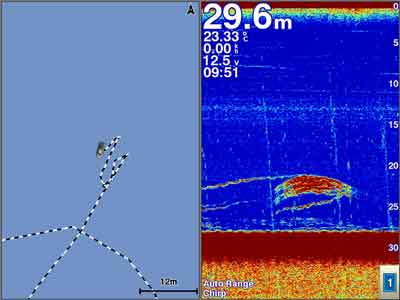
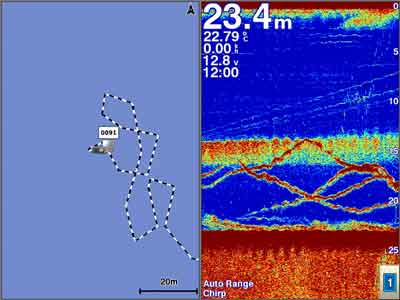
So if you come to a fishing spot and you see the big red blobs high in the water, you mostly know they are nannygai!
Better still you know where to position your baits in the water column.
Many people believe that finding red emperor and nannygai is limited to depths over 40 metres!
However, I’ve been catching them inshore around the 20-metre mark for years out of my barra punt!
Sometimes as close as 7 miles offshore.
It’s why my Wonky Holes online fishing course has been so popular. It helps anglers catch big redfish from small boats without having to travel all the way to the reef.
Wonky Holes
Wonky Holes have become a topic of interest to recreational anglers, especially for those that like to try to find their own personal untouched fishing havens.
It certainly became a passion of mine over 27 years ago. I guess that’s what has made me the pioneer in finding and fishing these gems.
They are now becoming a hot topic with scientists to help understand the Groundwater flow from the artesian aquifers. Turns out they may help us understand the level of the water table among other topics.
Finding red emperor and nannygai using down imaging
Since side scan has been available in lower frequencies it has allowed a bit more freedom in finding these small isolated spots offshore.
In the past, if you just missed one with 2D sounding equipment you wouldn’t know it was there.
If down imaging was available back in the early days that would have made it easier too although it doesn’t cover the range a side scan does.
What down image does, however, is allow us to see the 3D effect more on a 2D display.
For anglers who have never seen a Wonky, the down imaging will give them the best insight into what they look like.
Because 2D does not really show the shapes of objects like the high frequency down scan.
Down scan, in this case, would help anglers determine if the structure is a wreck, reef, wonky hole or rubble bottom.
Watch the video below for some underwater footage of large mouth nannygai on wonky holes and all the life that’s down there.
Note how it is easy to see the structure of the holes as they feed up from beneath the surface in the video below.
It is this up-welling and the growth it attracts around the hole that attracts the red emperor and nannygai in the first place.
We aim to get some great screenshots and sounder recordings in the coming months of red emperor. As a result it will give you more of an idea what to look for. So tuned for that on the blog.
To find them ASAP, best bet is to do our Wonky Holes course, find some of these isolated honey pots and hang on!


